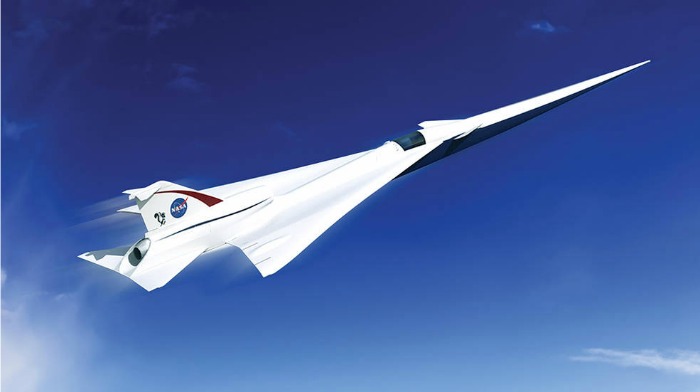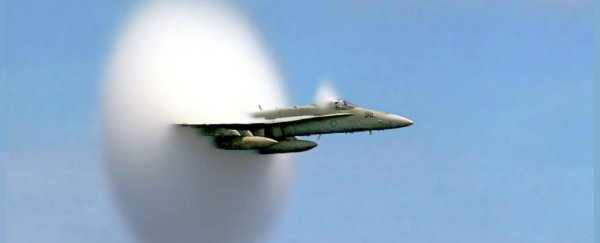NASA has commissioned engineers to design a new kind of jet that can travel faster than the speed of sound, but without the telltale sonic boom. Instead, the aircraft will produce a soft thump as it breaks the sound barrier, which the researchers are adorably calling a "supersonic heartbeat".
It's hoped that the new jet could eventually fill the commercial gap left by the retirement of the Concorde - which travelled at twice the speed of sound (Mach 2) and could get passengers from London to New York in just 3.5 hours - but without all the noise complaints.
From an engineering point of view, we've long had the ability to travel at supersonic speeds - which is generally anything over 1,234 km/h - but when we do, it triggers a sound explosion that can travel thousands of metres in a jet's wake, rattling houses and cars as it goes. As you can imagine, not exactly ideal for heavily trafficked flight paths.
But NASA hopes to change all that by developing a jet that's capable of quieter, or 'low boom', supersonic travel, and could allow commercial passengers to fly at speeds greater than the speed of sound again.
They've contracted aeronautical giants Lockheed Martin to complete a preliminary design of the aircraft for them, which they're calling Quiet Supersonic Technology (QueSST).
"It's worth noting that it's been almost 70 years since Chuck Yeager broke the sound barrier in the Bell X-1 as part of our predecessor agency's high speed research," said NASA Administrator Charles Bolden. "Now we're continuing that supersonic X-plane legacy with this preliminary design award for a quieter supersonic jet with an aim toward passenger flight."
You can see an artist's impression of QueSST below:
 Lockheed Martin
Lockheed Martin
The project is the first in NASA's 'X-planes' series, which they introduced as part of their 2017 budget, and they hope that if all goes to plan, they'll be flight testing a scaled-down version of the aircraft by 2020.
The first step is for Lockheed Martin to develop some baseline aircraft requirements and, based on early research, outline a preliminary design for QueSST over the next 17 months. That design will then undergo initial testing, including wind tunnel validation, before NASA decides whether or not it'll be worth building.
Importantly, NASA will also work with the community to determine 'acceptable sound levels' for supersonic travel.
"Developing, building and flight testing a quiet supersonic X-plane is the next logical step in our path to enabling the industry's decision to open supersonic travel for the flying public," said Jaiwon Shin, the associate administrator for NASA's Aeronautics Research Mission.
It's pretty exciting stuff, because if sonic booms are no longer a problem, there's not a huge amount (aside from cost) stopping commercial airlines for travelling at or beyond the speed of sound.
And even though the Concorde was fast, in the 13 years since it's been retired, air travel has gotten even faster - there are now concepts for jets that can travel an incredible 10 times the speed of sound out there. And at the end of last year, Airbus patented a jet that could fly at 4.5 times the speed of sound (also with a reduced sonic boom), taking passengers from London to New York in just 1 hour.
If we could achieve those speeds quietly, it'd be pretty revolutionary for air travel. Seriously, bring it on.
